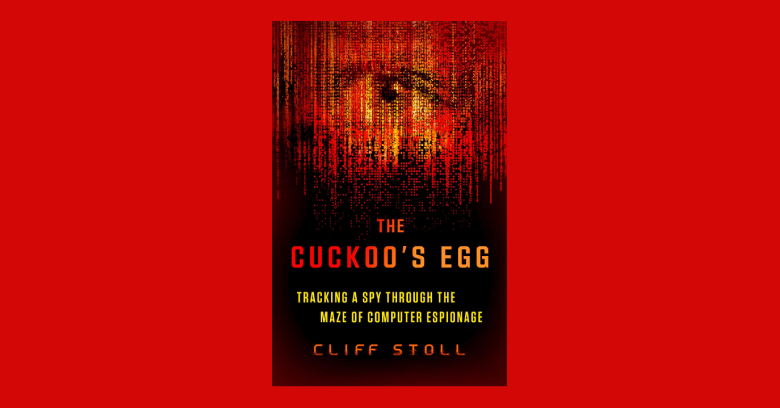Book: The Cuckoo’s Egg by Clifford Stoll

In today’s hyper-connected world, cybersecurity is a constant buzzword, with news of breaches and digital espionage filling our feeds daily. But what if I told you that the foundational story of how we first truly understood these threats was penned over 35 years ago? Clifford Stoll’s The Cuckoo’s Egg: Tracking a Spy Through the Maze of Computer Espionage isn’t just a historical artifact; it’s a thrilling, surprisingly human, and still incredibly relevant account of the early days of cybercrime.
Summary
Stoll, an astronomer by training, found himself in an unlikely role in 1986. Working as a system administrator at Lawrence Berkeley National Laboratory, he stumbled upon a 75-cent accounting error in the computer usage logs. For most, this would be a minor inconvenience, easily dismissed. For Stoll, it was a nagging curiosity that spiraled into an international spy hunt.
What begins as a meticulous, almost obsessive, quest to find a minuscule discrepancy soon uncovers something far more sinister: an unauthorized user, or “hacker,” exploiting vulnerabilities in the network to gain access to sensitive government and military systems.
What makes The Cuckoo’s Egg so compelling is Stoll’s detailed, yet accessible, explanation of his investigation. He doesn’t just tell us what happened; he shows us how he pieced it together. We witness his late-night stakeouts at the terminal, the creation of ingenious “honeypots” to trap the intruder, and the painstaking analysis of logs and digital footprints. It’s a masterclass in early cyber forensics, demonstrating the power of persistence, observation, and a healthy dose of technical ingenuity.
Beyond the technical details, Stoll’s narrative is infused with his own personality. His frustration, his moments of triumph, and his often-humorous internal monologues make him an incredibly relatable protagonist. You feel like you’re right there with him, sharing in the thrill of the chase.
But this isn’t just a story about computers and networks. It’s a story about people. Stoll’s investigation ultimately uncovers a ring of West German hackers selling access to Soviet KGB agents. This revelation adds a chilling layer of geopolitical intrigue to the technical puzzle. The Cuckoo’s Egg reminds us that behind every IP address and line of code, there are human motivations, human vulnerabilities, and very real consequences.
Why It Still Matters Today
While the technology discussed in The Cuckoo’s Egg may seem quaint by today’s standards (think modems and command-line interfaces), the core principles remain remarkably relevant:
- The Importance of Vigilance: Stoll’s initial refusal to ignore a small anomaly highlights the critical need for constant vigilance in cybersecurity.
- The Power of Persistence: His unwavering dedication to solving the puzzle, despite numerous dead ends and setbacks, is a testament to the power of persistence in any investigation.
- The Human Factor: The book underscores that cybersecurity isn’t just about firewalls and antivirus software; it’s about understanding human behavior, both malicious and protective.
- The Interconnectedness of Our World: Even in the 1980s, Stoll’s investigation revealed the global nature of cyber threats, a truth that has only intensified since.
Modern Cybersecurity
Despite being decades old, The Cuckoo’s Egg remains profoundly relevant in the modern cybersecurity landscape. The core tactics and investigative techniques described are still in use today. For instance, the hacker’s use of a vulnerability in GNU Emacs to escalate privileges – a then-novel method to gain greater control over a system – perfectly illustrates the concept of privilege escalation, a tactic still actively exploited by adversaries. Similarly, the way the hacker moved from system to system, leveraging one compromised machine to gain access to another deeper in the network, is the very essence of pivoting, a critical maneuver in offensive security operations and a fundamental technique taught in red teaming exercises.
On the defensive side, Stoll’s meticulous work serves as a powerful reminder of the importance of robust forensics. His detailed note-keeping and the exhaustive analysis of system logs were instrumental in uncovering the hacker’s trail, mapping their movements, and ultimately identifying their true identity and purpose. This commitment to logging and record-keeping is the bedrock of incident response and detection even today.
Whether you’re a seasoned cybersecurity professional, a budding hacker, or simply someone who enjoys a gripping true-crime story, The Cuckoo’s Egg is a must-read. It’s a foundational text in the history of cybersecurity, a testament to the power of human ingenuity, and a thrilling ride that will keep you on the edge of your seat. Pick up a copy, and prepare to be amazed at how a 75-cent error could unravel such an extraordinary tale and lay bare principles that continue to define our digital security efforts.
